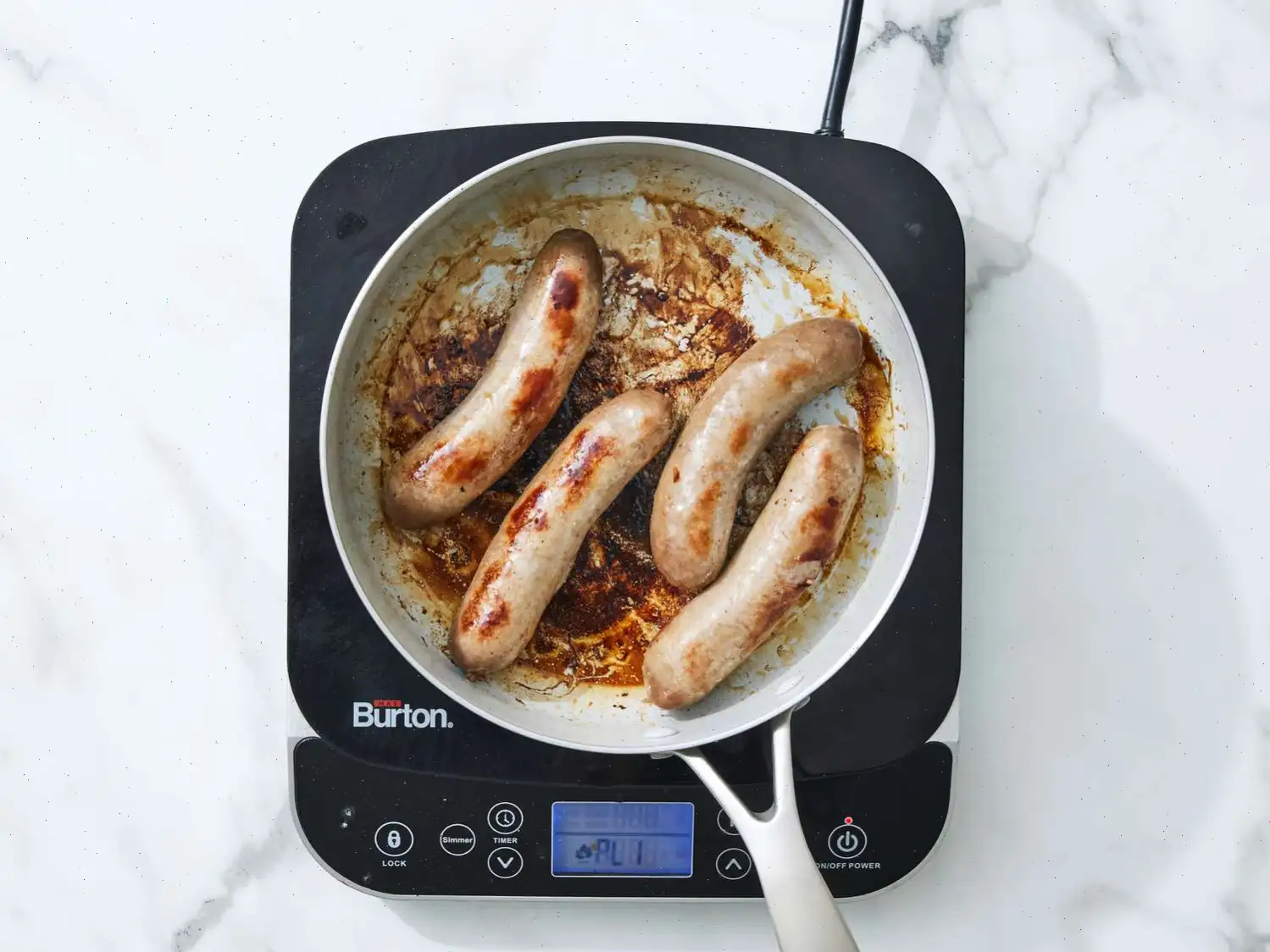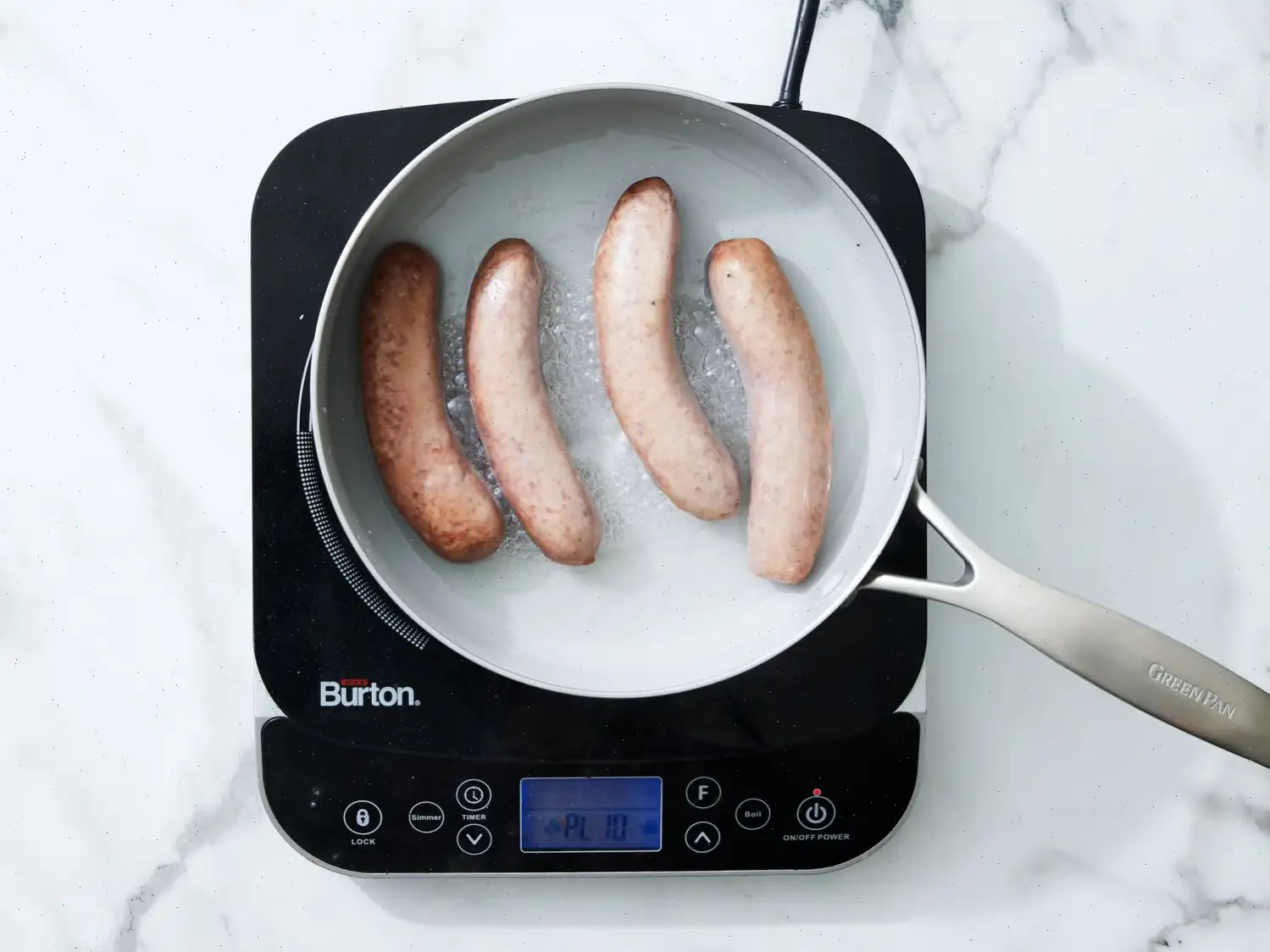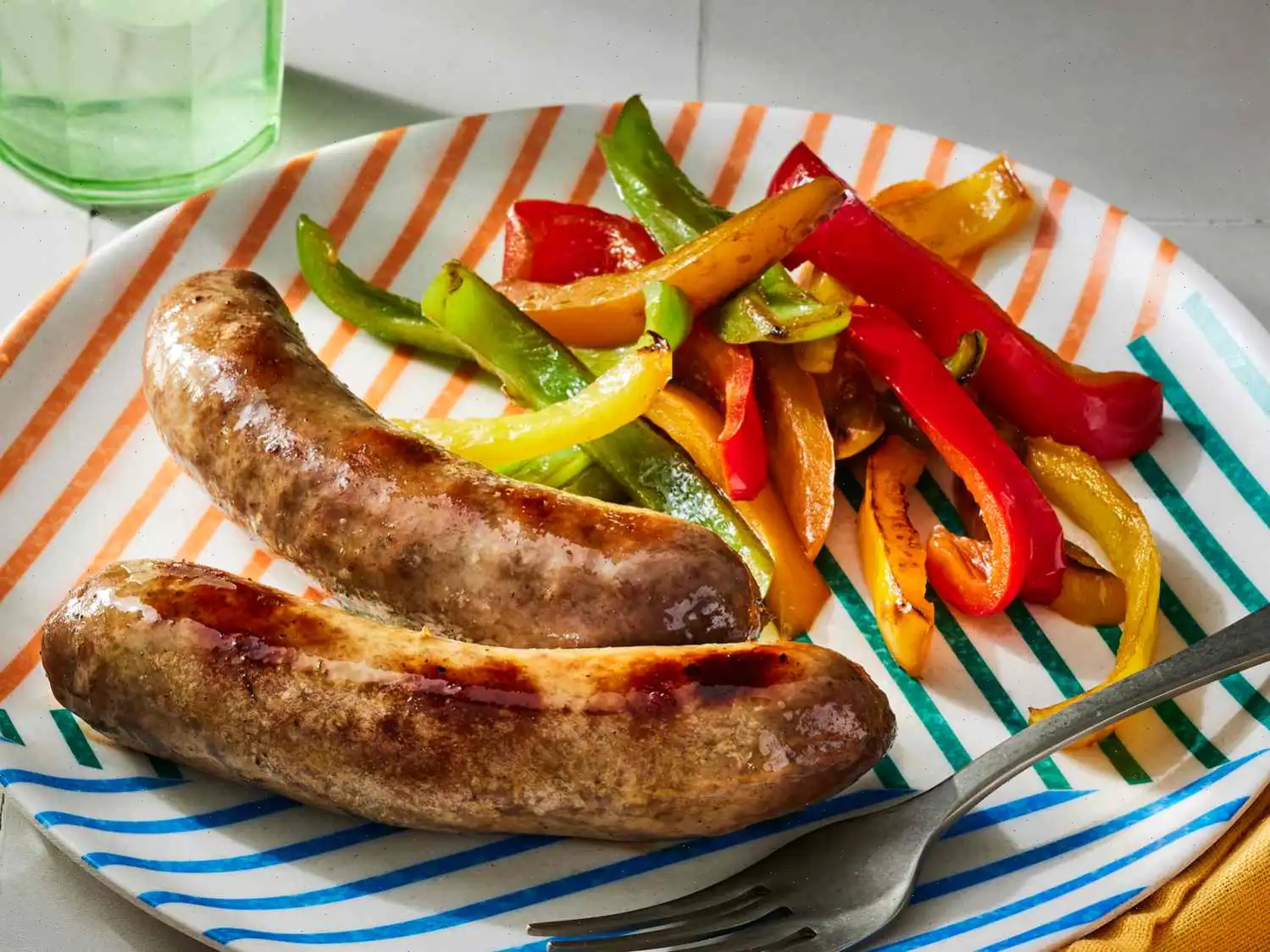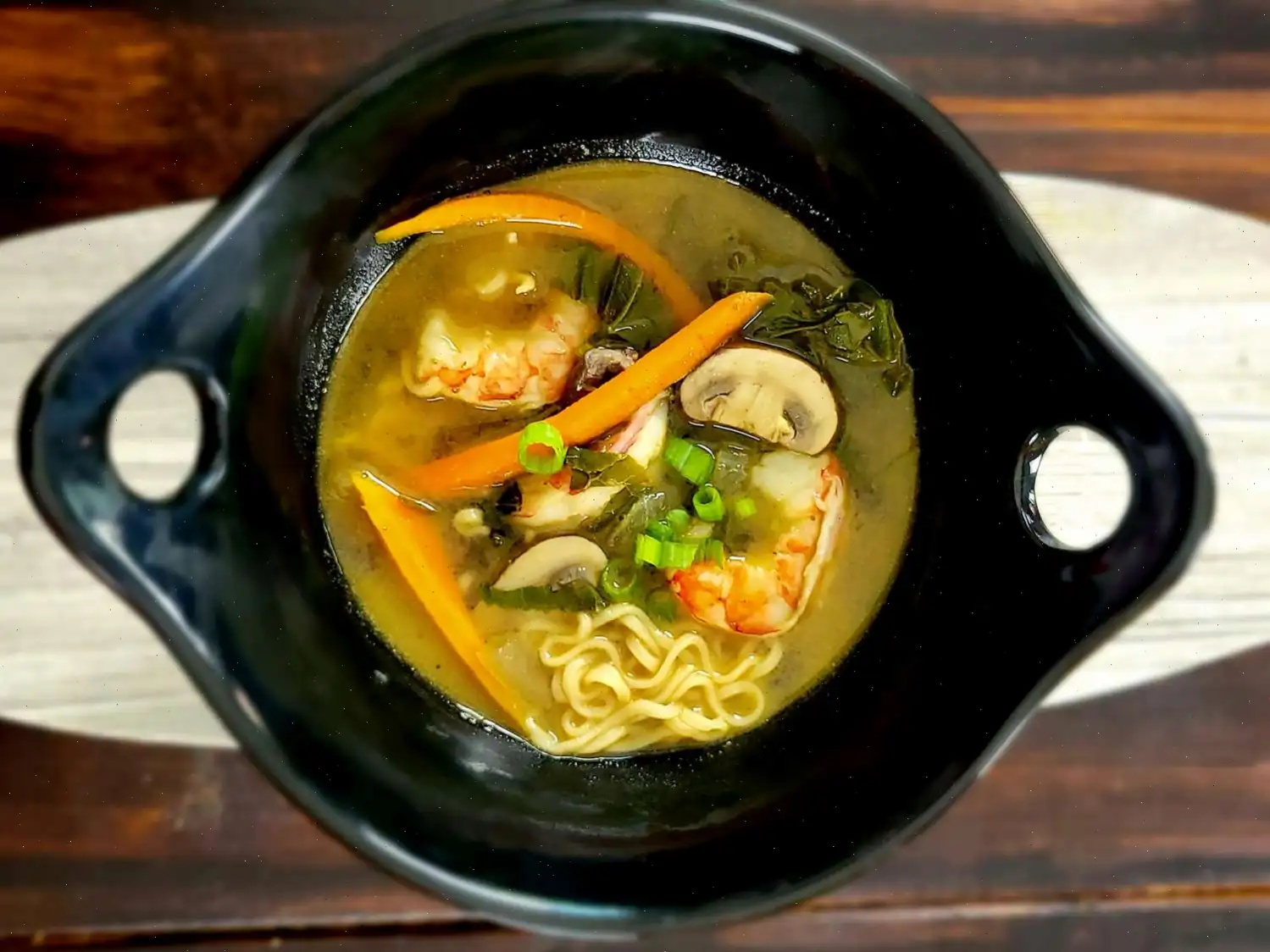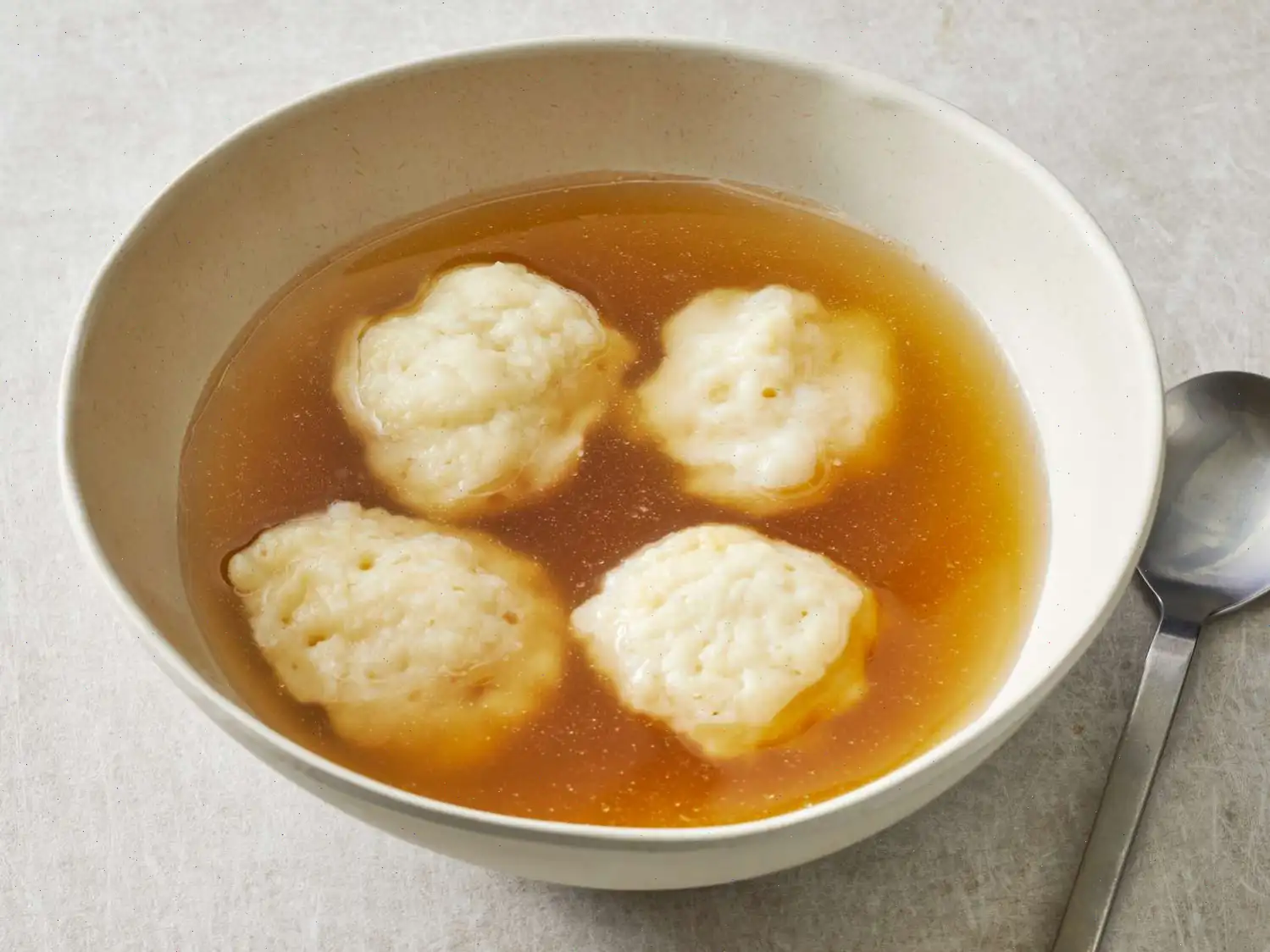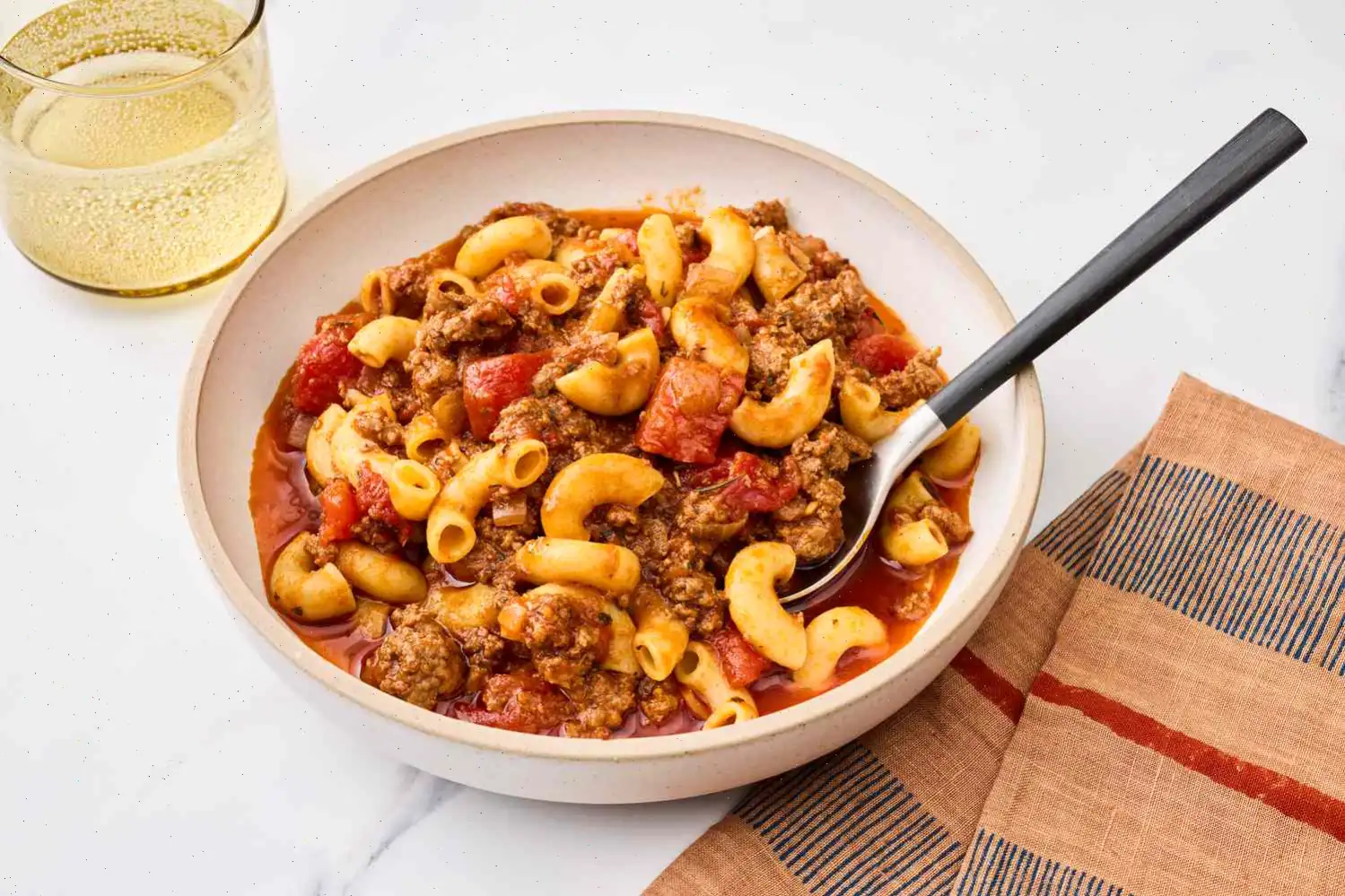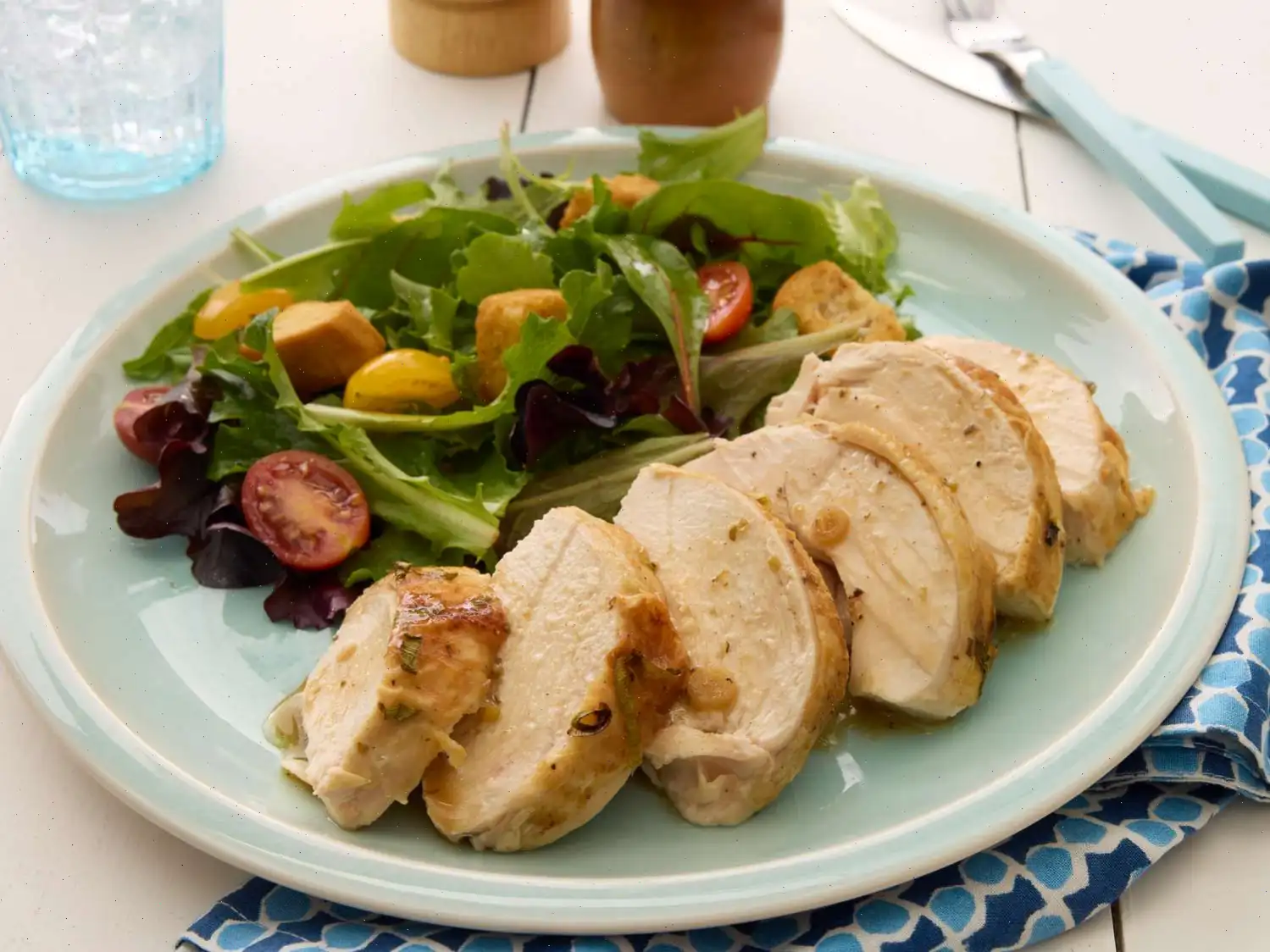
How to Cook Sausage Recipe
Learn how to cook sausage three test kitchen-approved ways: on the grill, in the oven, or in a skillet. No matter which method you use, youll have plump, juicy, and flavorful sausages ready in no time!
Test Kitchen Tips
- Opt for the reverse sear method when cooking sausage in any way: Cooking slowly and gently until the desired temperature is reached, then flash-browning the skin at the end.
- Lining your baking sheet with foil makes cleanup a breeze!
- Indirect heat on the grill is a great way to gently cook foods without too much heat to risk burning the outside before the inside is done.
- Insert the temperature probe horizontally instead of vertically. This way, youll be much more likely to hit the center of the meat and get a more accurate reading.
- It is not necessary to pierce sausages. In fact, it is not recommended, as it causes all the juices to spill out, leaving the sausage dry and shriveled.
How to Serve Cooked Sausage
Need serving inspiration? Try one of these ideas:
- Saut peppers and onions with tomato sauce and serve with Italian sausage on a hoagie roll.
- Serve grilled sausages with mustard, ketchup, sauerkraut, and/or relish on a bun.
- Throw your cooked sausage into soups.
Storage and Make-Ahead Tips
- For the skillet method, the sausages can be steamed/poached up to two days ahead and then finished with a sear when ready to eat.
- Cooked sausage can be stored in an airtight in the refrigerator for up to one week.
Ingredients
This recipe yields 4 servings:
- 1 pound fresh sausage links (such as bratwurst, Italian sausage, or kielbasa)
Directions
Grill
Prep: 5 min | Cook: 15 min | Total: 20 min
- Preheat a gas grill to medium-high (400F to 450F, 200C to 230C) on one side, or push hot coals to one side of a charcoal grill.
- Place sausage links on the oiled grates over the unlit side of the grill. Cover and grill until a thermometer inserted into the thickest portion of the sausage registers 150F (66C), about 8 to 10 minutes, turning halfway through the cooking time.
- Move sausages to the lit side of the grill; grill uncovered, turning once halfway through, until browned and a thermometer inserted into the thickest portion of the sausage registers 160F (71C), about 1 to 2 minutes.
- Serve as desired.
Oven
Prep: 5 min | Cook: 20 min | Total: 25 min
- Preheat oven to 350F (175C). Line a large rimmed baking sheet with aluminum foil or parchment paper.
- Arrange sausage links in an even layer, with at least 1-inch between each link, on the prepared baking sheet.
- Bake in the preheated oven until a thermometer inserted into the thickest portion of the sausage registers 160F (71C), about 20 minutes.
- Serve as desired.
Skillet
Prep: 5 min | Cook: 15 min | Total: 20 min
- Place sausage links in an even layer, with at least 1-inch between each link in a medium, high-sided skillet with about 1/4-inch of water. Bring to a gentle simmer over medium-high heat, about 5 minutes.
- Reduce heat to medium to maintain the simmer; cover and cook undisturbed until a thermometer inserted into the thickest portion of the sausage registers 130F (54C), about 6 to 8 minutes.
- Increase heat to medium-high, uncover and cook, turning occasionally, until the water evaporates, sausages are browned, and a thermometer inserted into the thickest portion of the sausage registers 160F (71C), about 8 minutes.
- Serve as desired.
Nutrition Facts (per serving)
- Calories: 369
- Total Fat: 31g (40% DV)
- Saturated Fat: 10g (50% DV)
- Cholesterol: 98mg (33% DV)
- Sodium: 923mg (40% DV)
- Total Carbohydrate: 2g (1% DV)
- Dietary Fiber: 0g (0% DV)
- Total Sugars: 1g
- Protein: 21g (42% DV)
- Iron: 1mg (8% DV)
- Potassium: 388mg (8% DV)


Recipe by: Ita Mac Airt
History of Sausage
Sausages have been a staple of human cuisine for thousands of years, with records of their existence dating back to ancient civilizations such as the Greeks and Romans. The word "sausage" itself comes from the Latin word "salsus," meaning "salted." In medieval Europe, sausages were an efficient way to preserve meat, particularly pork, by mixing it with salt and other seasonings, then stuffing it into casings made from animal intestines. Over time, the technique spread across Europe and evolved into numerous regional varieties, with different spices, meats, and cooking methods.
Regional Variations
Sausages vary greatly depending on the region and its culinary traditions. For instance, Italian sausages are often seasoned with fennel or garlic, while German bratwurst is typically made with a mix of pork and beef and flavored with a blend of spices such as nutmeg, ginger, and caraway. In Poland, kielbasa is a beloved variety, smoked or fresh, made with a mix of pork and beef and seasoned with garlic, marjoram, and pepper. Each country has its own version, and sausages play an important role in local festivals, markets, and everyday meals.
Differences from Similar Dishes
Sausages differ from other meat-based dishes like burgers or meatballs in both their preparation and cooking methods. While burgers and meatballs are typically made by shaping ground meat into patties or balls, sausages are made by stuffing seasoned ground meat into casings, which allows them to retain moisture and flavor during cooking. Unlike burgers, which are often cooked quickly on high heat, sausages benefit from slow, indirect cooking methods such as grilling, baking, or simmering to ensure they are cooked evenly and thoroughly.
Where Sausages Are Typically Served
Sausages are a versatile dish and are enjoyed all over the world. In the United States, they are commonly served at cookouts and barbecues, often grilled and served on buns with mustard, ketchup, or sauerkraut. In many European countries, sausages are a key part of traditional breakfasts or dinners. For example, in Germany, sausages are often paired with sauerkraut or potato salad, while in Italy, they may be served with peppers and onions in a sandwich or alongside pasta. Additionally, sausages are frequently added to soups and stews, enhancing the dish with rich, savory flavors.
Interesting Facts
Did you know that sausages are among the oldest forms of processed meat? Early versions of sausages were created by hunters and butchers to preserve excess meat and make it easier to transport. They were also used as a way to avoid wasting any part of the animal, as even the intestines were used to create casings. Interestingly, the worlds longest sausage, measuring over 218 meters (717 feet), was created in 2006 in Serbia as part of a Guinness World Record event. This highlights not only the popularity of sausages but also the creativity behind the dish!
Conclusion
Sausages are a globally beloved dish, rich in history and regional variations. Whether grilled, baked, or cooked in a skillet, they offer a wide range of flavors and textures. Understanding their origins and unique qualities can help you appreciate the culinary importance of sausages in cultures around the world. No matter your preferred method of cooking, sausages remain a delicious and versatile option for any meal.
You can listen to this recipe in AI audio format. Simply click the play button below to listen to the content in a format that suits you best. It’s a great way to absorb information on the go!
FAQ about How to Cook Sausage Recipe
Comments
Carolyn Davis
11/04/2024 01:15:56 AM
This is my go-to method for cooking sausages in a skillet. They turn out perfectly every single time.
Diane Parker
04/22/2023 04:58:37 PM
I thoroughly enjoyed using this cooking method for preparing my kielbasa in a skillet, resulting in a delightful charred flavor. Appreciate the clear instructions provided.
Jonathan Martin
02/13/2024 03:52:06 PM
Here are some helpful tips in this review. We decided to grill our German brats and used a meat thermometer to check the temperature by inserting the probe into the side of the sausage instead of piercing the top. This was a new technique for me, and the brats turned out perfectly cooked.
Alexander Wilson
01/07/2023 10:48:57 PM
We love using this grilling technique to cook our brats. We prefer a nice char on our sausages, so we grill them for a bit longer until we achieve the perfect charred surface.
Sharon King
12/17/2024 04:50:51 AM
Excellent directions, simple to understand and follow.


